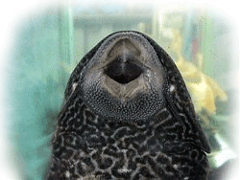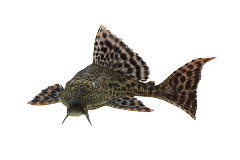| Nov 14, 2017
Benefits of the Plecostomus!
The common plecostomus is a part of the catfish family and is also called hypostomus plecostomus, but plecos come in many different varieties and colors! They are nocturnal and do require at least 1 or a few hiding spaces just for them: driftwood, for example, particularly works well. Sometimes called the "janitor fish" or "sucker fish" these helpful species can help keep tanks clean as they are natural scavengers. They are bottom-feeders and will eat uneaten food or other leftover matter that would otherwise cause harmful nitrates in the water. Not all are algae-eaters, though. Some are good cleaners, but others are simply neat to look at or can even be carnivorous!

If a plecostomus is indeed the algae-eating type, it can reduce and maintain algae growth in your tank, making it a great species for aiding in the removal of algae build-up. Here are a few other benefits for keeping a pleco in your fish community:
*Hardy & adaptable to many different tank environments & conditions
*Great for beginner aquarium hobbyists
*Fairly versatile when considering tank mates
*Friendly & good-natured, will only become territorial with similar species in the same tank or if pushed to defend their favorite hiding spaces

What's more, a plecostomus will stir up the substrate in your tank: loosening up and consuming the food that falls and gets lost in the substrate, which would rot and potentially release toxic materials or gas if left alone. Another benefit of the pleco stirring up the gravel or sand is that it mixes oxygen back into the substrate, which then fuels the beneficial bacteria within. This oxygenation of the substrate in turn promotes aerobic bacteria growth that helps stabilize the nitrogen cycle.
As some species of plecostomus get older, they may eat less algae than when they were young and may eventually produce more waste than some other fish species. However, since food or other matter that is consumed by the pleco gets slowly released as the pleco's waste, the amount of negative impact that the waste has is actually less than if the uneaten food and other leftover matter was not eaten by the pleco or removed by hand first.

Be sure to be careful in selecting the right species of plecostomus for your aquarium, too, as they can grow anywhere between only 4 inches to up to 2-3 feet in length. They can also live from 10 to 15 years with proper care. Now until January 8th you can get a common plecostomus for only $3.49 at Uncle Bill's Pet Centers!